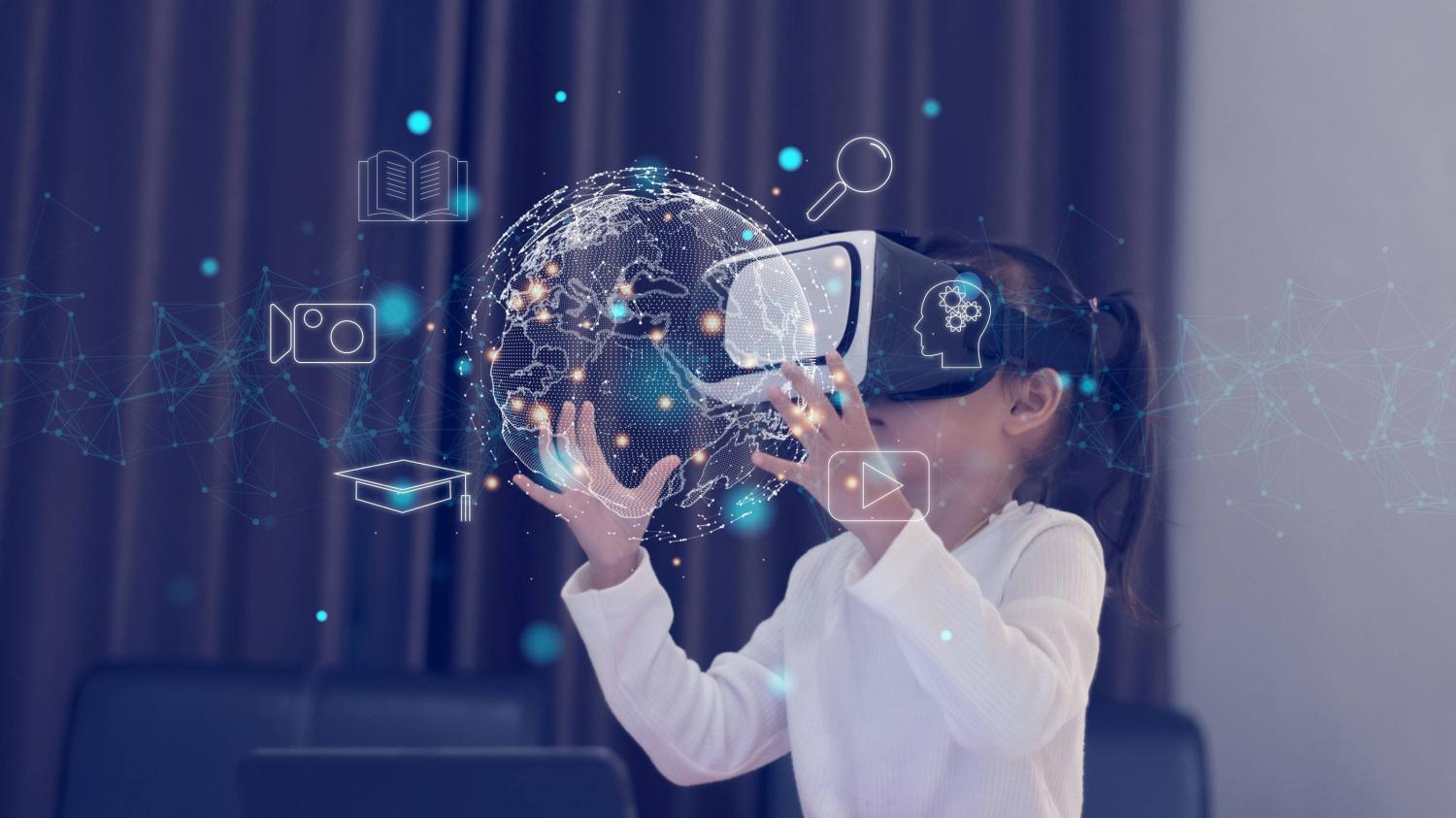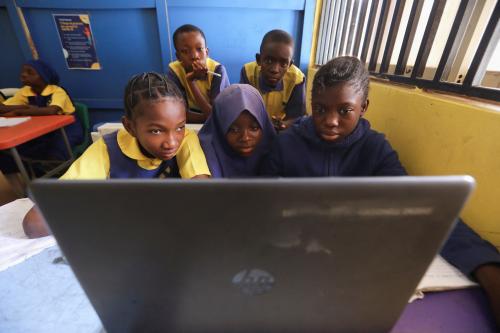The evolution of the “digital divide”:
The first digital divide: The rich have technology, while the poor do not.
The second digital divide: The rich have technology and the skills to use it effectively, while the poor have technology but lack skills to use it effectively.
The third digital divide?: The rich have access to both technology and people to help them use it, while the poor have access to technology only.
The theme of the most recent Education World Forum (EWF), the world’s largest annual gathering of education ministers, was “new beginnings.” The program featured perspectives from education leaders from all over the world on a variety of topics, many of them evergreen: access to education; educational quality; equity; jobs; skills; the role of teachers; gender; and sustainability. Post-pandemic, more attention was paid to issues of building resilience in education systems than it had been in past years. Reflecting larger societal trends, discussions of the role of education vis-a-vis climate change were heard more often, and at a higher volume. However, one new topic did serve as a sort of thematic connective tissue across all three days of discussions, infusing doses of concern, confusion, worry, and excitement into considerations of whatever was on the formal agenda for ministerial deliberation: the potential role and impact of artificial intelligence (AI) in education.
I sat in on one well-attended and lively discussion session in which a participant recounted a recent assembly at a university in a lower-middle income country in Asia where a student asked a question about the use of ChatGPT—the chatbot that ignited the current explosion of excitement about AI use in education when it was released late last year. The head of the university quickly interrupted, noting that such questions were largely theoretical at the institution as the tool was not yet used in the country in any real way. The speaker then asked the few hundred students in the audience if they had ever used ChatGPT—100 percent of them raised their hands. (Eighty percent of the students kept their hands up when asked a follow-up question: “And how many of you have used it in the last 24 hours?”) Responses in the EWF event hall were a mix of looks of concern and knowing chuckles.
In response, one minister expressed excitement about what new AI tools could do for students in his country, especially those not enrolled in school, those in classrooms where the student-to-teacher ratio often exceeds 60:1, or those in schools where teachers are inadequately trained or poorly supported. We don’t have enough qualified teachers for all of our students and aren’t likely to in the near future, he said. AI technology can bridge this gap.
The promise of AI and personalized learning
The promise of a personalized digital tutor or teacher, an always-on “teaching machine” that never sleeps and is responsive to the cognitive needs of an individual learner, has been a consistent theme across the history of educational computing. Influential academic papers and even science fiction books have inspired generations of educational software and hardware developers to create tools and devices to enable more personalized learning. While to date the impact of such efforts has been mixed, at best, and related rhetoric has often outstripped observable reality, progress is being made—and quickly. Tools like Khanmigo from Khan Academy, which is built on the AI technology that powers ChatGPT, offer tantalizing glimpses of what may soon be possible and accessible for millions of learners around the world.
In a world experiencing a global learning crisis, where as many as 70 percent of 10-year-olds in low- and middle-income economies can’t read and understand a basic text, over 244 million children and youth are out of school, and there is a projected global teacher shortage of almost 70 million teachers by 2030, a new wave of AI-enabled educational technology innovations can’t come too soon.
Digital divides in education
The existence of a “digital divide” in education—the idea that some children, families, teachers, and schools have access to information and communications technologies to support learning and others do not—has been observed and lamented for over a generation. As access to computing devices has improved, a “second digital divide” has emerged which, according to the OECD, “separates those with the competencies and skills to benefit from computer use from those without.” Increasingly recognizing this, education systems around the world—rich and poor alike—consider difficult trade-offs related to investing in computing infrastructure and the cultivation of teachers’, learners’, and administrators’ skills to make productive use of this infrastructure. This often happens in fiscal environments where resources are constrained, related know-how is scarce, and the challenges affecting the sector remain abundant. At the same time, it’s hard to go a day without reading a headline speculating about the potential for new advances in artificial intelligence to transform education. Might access to AI represent a new (third?) digital divide in education?
Might access to AI represent a new (third?) digital divide in education?
To be clear: The existing digital divides in education, gaps traditionally measured in the number of computing devices available to support teaching and learning and the availability, speed, and reliability of internet connectivity, aren’t going away any time soon. While access to educational computing tools is near ubiquitous in countries like South Korea and Estonia, stubborn gaps remain across education systems even in the “advanced” economies of the OECD in terms of both access and skills. The reality in less developed countries in Africa, Asia, and Latin America is worse. And even where schools are well-resourced and connected to the internet, access at home is another matter, as the recent global experiment in emergency remote learning made clear.
While progress in this area isn’t being made fast enough for many learners—especially those in marginalized communities and in the poorest countries—the playbook for progress is largely known. Even where components of a solution may involve getting internet access from satellites orbiting the earth, this isn’t rocket science: Related progress is a function of a combination of money, planning, and political will. Whether measured in days or decades, the related trend line over time is positive.
Let’s posit that the connectivity challenge in education can be solved, and will be, and that students will (eventually) have access to their own devices for learning, turbocharged in various ways by AI. What then? Let’s further hypothesize that students will possess the skills and competencies that will enable them to take full and productive use of the technology available to them. Might this mean the end of the “digital divide”?
Looking forward
Closing the digital divide in education has traditionally been about eliminating a gap between the rich and the poor, where, to oversimplify, rich kids have access to lots of devices and fast, reliable connectivity, and poor kids do not.
Is it possible to imagine a future in which a new digital divide emerges: where the rich have access to technology, increasingly powered by artificial intelligence, and to teachers to help them use this technology as part of their learning, while poor kids just have access to the technology?
From the perspective of 2023, when limited access to reliable connectivity and sufficiently powerful computing devices for learning remains the norm in so many schools and communities around the world, this may perhaps sound far-fetched.
That said, some experiences during the COVID-19 pandemic might offer a potential glimpse of things to come. Even in countries where access to devices and the internet at home was widespread and (relatively) equitable, there were still noticeable gaps in achievement between rich kids and poor kids in many places engaged in remote learning. Many plausible reasons have been advanced to explain gaps that occurred during the pandemic related to lack of access to digital learning opportunities and the quality of those opportunities. In addition, an emerging body of research from around the world during the pandemic (in places as diverse as Ghana, Indonesia, Poland, Saudi Arabia, and the United States) explores how, even when the use of technology played a dominant role in education, the involvement of parents and tutors in the learning process—in other words, people—was often consequential.
It’s been observed that, “The mediocre teacher tells. The good teacher explains. The superior teacher demonstrates. The great teacher inspires.” Proponents of increased use of AI education claim that various flavors of AI will soon be able to perform the first three duties. But what about the fourth? Education is, after all, a fundamentally human endeavor.
What if, in the future, access to technology is something available to all, and not only the privileged, while access to people (engaged parents, private tutors, trained teachers) is limited?
What might this mean—and what might we do about it?
The Brookings Institution is committed to quality, independence, and impact.
We are supported by a diverse array of funders. In line with our values and policies, each Brookings publication represents the sole views of its author(s).








Commentary
AI and the next digital divide in education
July 10, 2023